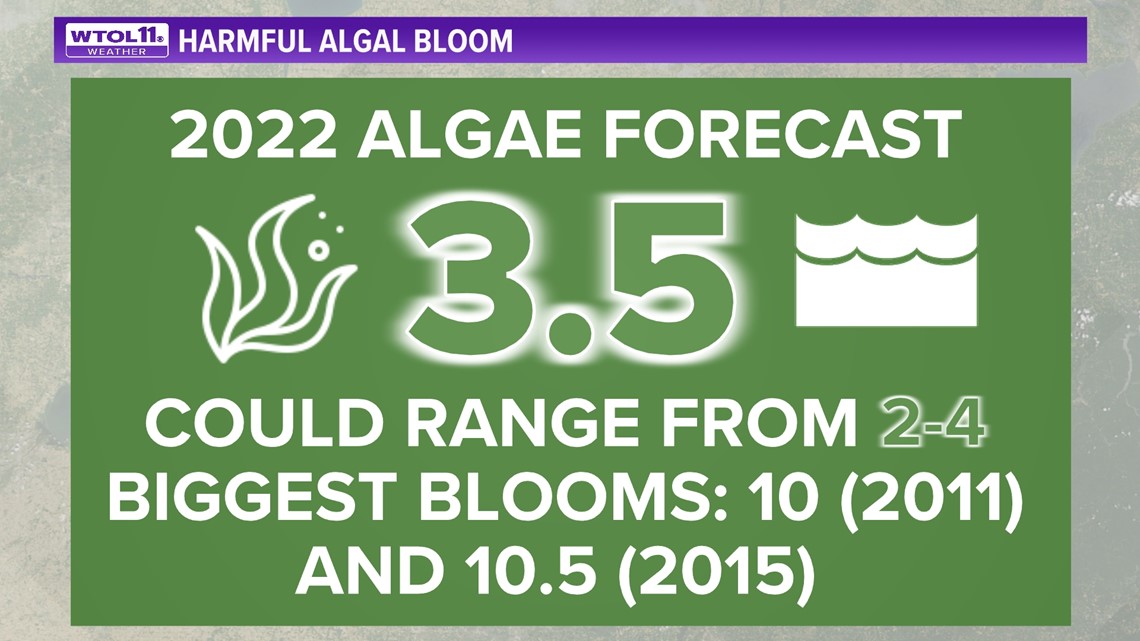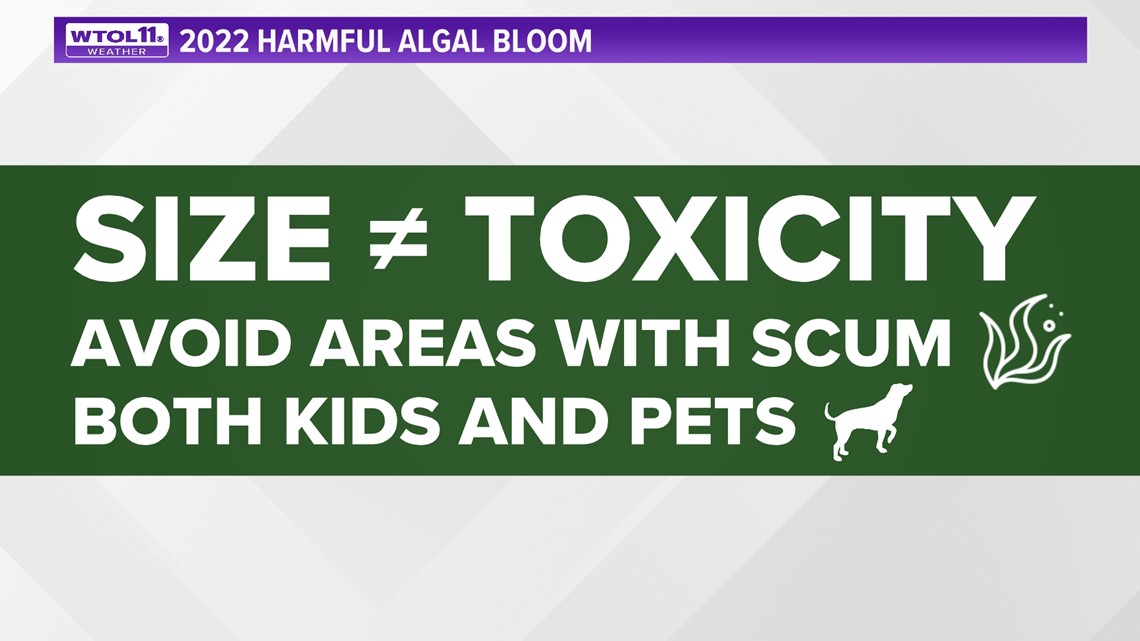TOLEDO, Ohio —
Every year, an algal bloom forms in Lake Erie, impacting the quality of drinking water, swim safety and the environment.
This year, experts say the harmful algal bloom (HAB) is supposed to be smaller than average. The severity index that measures the bloom's biomass does not have a limit, but the highest on record was a 10.5 in 2015-- and anything above 7 is considered severe.
While 2021's rating was measured at 6, the NOAA and associated research partners forecast the 2022 bloom will be 3.5, with a potential range between 2 and 4.


Although the bloom will be smaller, that doesn't mean it won't be any less toxic than larger blooms. The toxins in a bloom with a smaller biomass may just be more concentrated-- but it also may not be. Scientists study and track the algal blooms to determine its qualities.
In a statement from the Alliance for the Great Lakes, Agriculture & Restoration Policy Director Tom Zimnicki explained the potential threat of a smaller bloom:
"While this year's bloom is forecasted to be relatively mild compared to past years, even a smaller bloom can turn toxic and threaten drinking water safety."
The burden of algal blooms affects more than the environment and health: the impact is also economic. The cost of cleaning the contaminated water complicates things for consumers.
"The cost burden of these blooms on ratepayers is real," Zimnicki said. "According to new research from the Alliance for the Great Lakes, a family of five in Toledo is paying roughly an additional $100/year in their water bill because of this pollution."
Swimming and recreation
The algal bloom creates toxins that affect the water quality, an important issue for those who use Lake Erie for recreation. Currently, the Ohio DNR rating for the water quality at Maumee Bay State Park is good.
So far, the park has only spent seven days under advisory; last summer the total days under advisory for bacterial contamination and algal bloom toxins was 70, 13 of which were during June. With a smaller bloom this year, which is expected to reach its peak by mid-July, there may be fewer advisory days than 2021.
Exposure to algal bloom toxins can result in symptoms such as rash, blisters, wheezing, earaches, diarrhea, vomiting, eye irritation and headaches. Refer to the Ohio DNR Beach Guard to review water quality advisories before swimming or engaging in water recreation.



